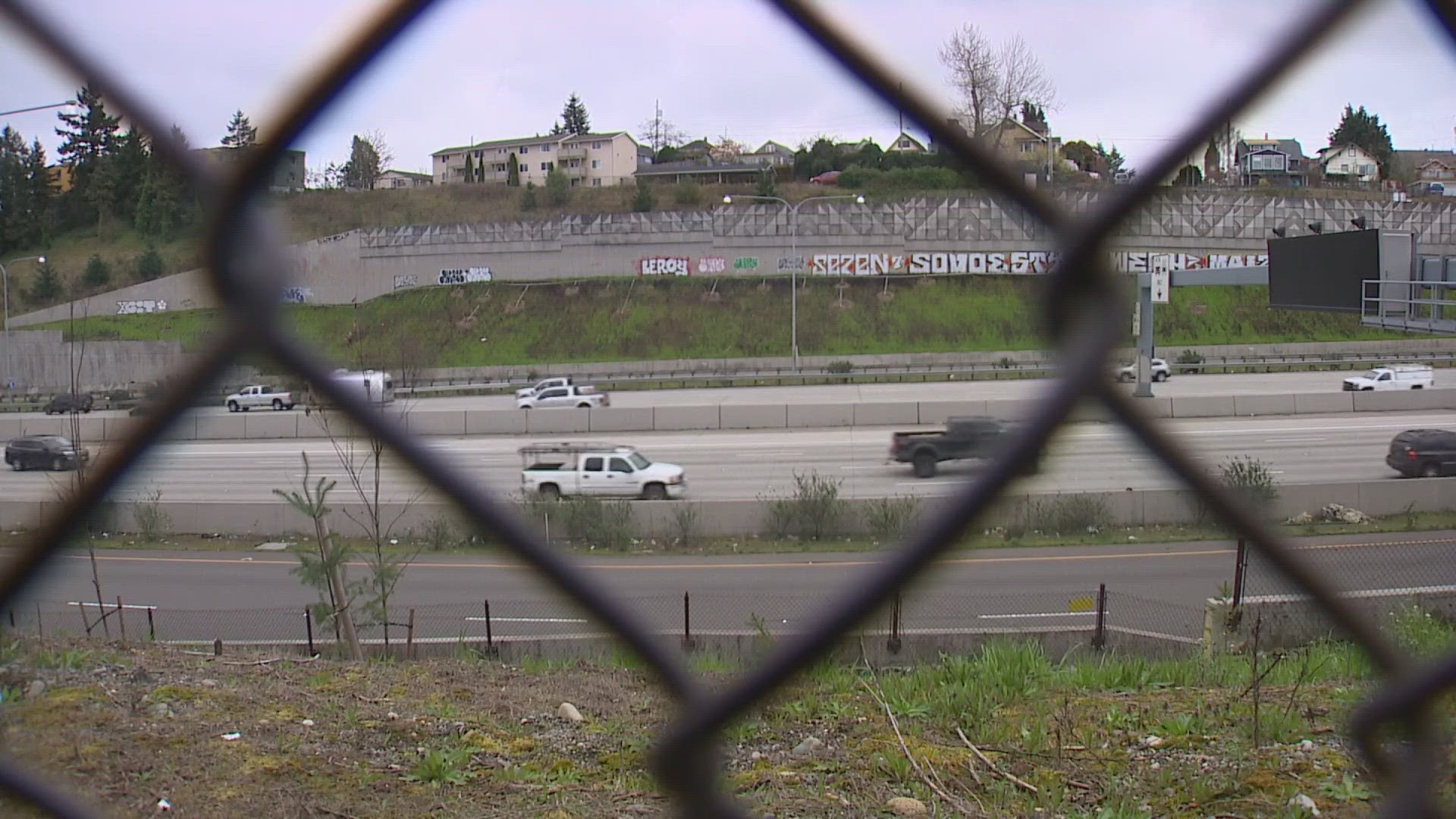TACOMA, Wash. — Anyone who has driven along the I-5 corridor between Seattle and Tacoma has likely seen walls tagged from top to bottom with graffiti during their commute.
Graffiti has been a consistent problem on the state’s freeways, and it’s becoming more expensive to remove.
Numbers from the Washington State Department of Transportation show that the costs of cleaning up graffiti increased significantly in 2020, then shot up again last year.
However, Representative Andrew Barkis has an idea of how to deal with illegal art: drones.
“Drone technology is expanding,” Barkis said. “There are actually drones that you can load with paint and paint over this.”
Earlier this year, Barkis introduced HB 1989, which creates a million-dollar pilot program that utilizes drones to paint over graffiti.
The program also explores different paints and coverings that could be used on infrastructure projects to prevent spray paint from sticking.
Traffic cameras could also be used to spot graffiti artists while they’re tagging walls.
“Today, you’d have to send out a crew with a high-lift truck and about eight people, and it just takes too long and is too expensive,” he said. "One person with a drone can paint over an area, and if you have a fleet of those, then you’re staying on top of it, cleaning it up, and not allowing it to stay present for a long period of time.”
Barkis says graffiti is out of control. It is a public nuisance that often spreads along transportation corridors, covering highway projects that were just completed.
“All that brand new infrastructure, all that Sound Transit, every bit of it, all the way to Seattle and beyond is tagged and covered with graffiti,” he said. “Seattle is a beautiful city, and it needs to reflect that. We got millions of people coming here, we got the World Cup coming here, I mean, the way it looks today is disgusting.”
Last week, Governor Inslee signed off on the project.
The program kicks off on June 6, when the bill takes effect. Six months after that, WSDOT will update the Legislature on the program's progress.
Now Barkis hopes this can be the first step in cleaning up the state’s highways.
“I don’t believe that graffiti will ever go away. It’s been around forever,” he admits. “But I think there’s a pride in our community. I think that the people of Seattle, and the Northwest, and the Puget Sound region especially, are very tired of this.”

